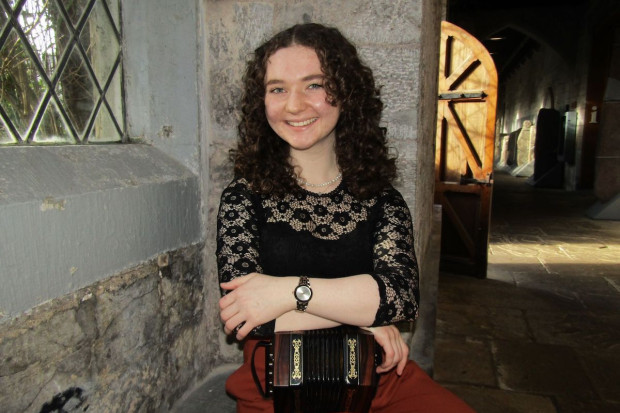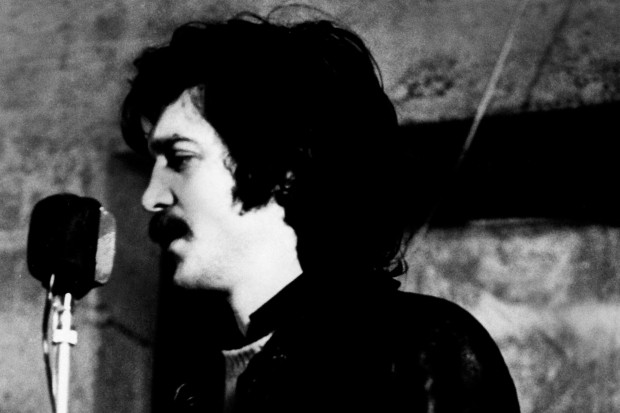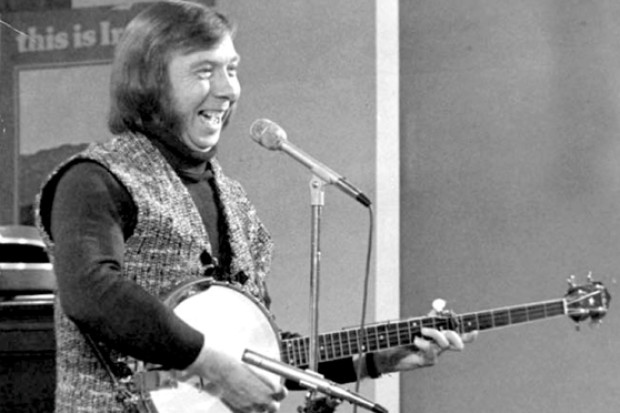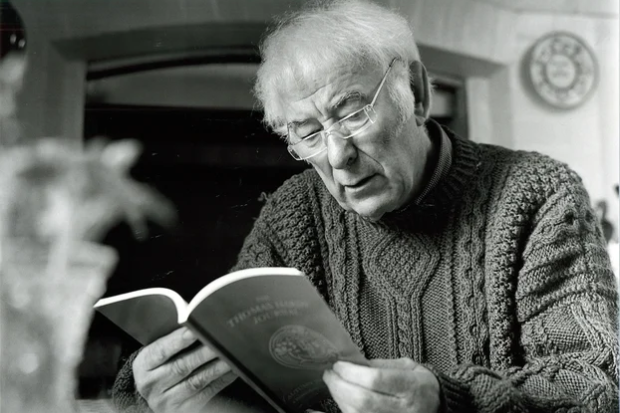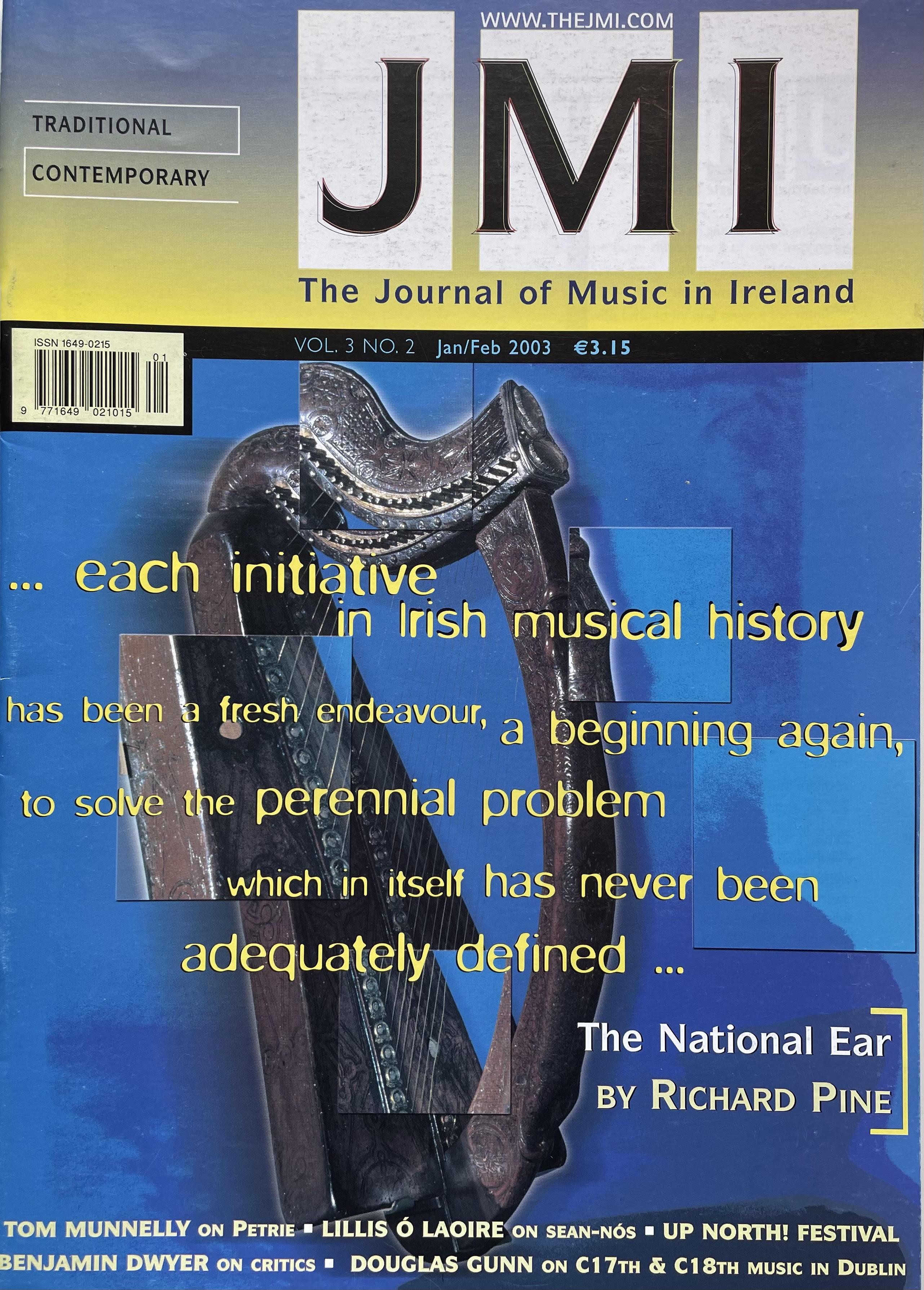
The National Ear: Part 1
An incipient national radio service
My reason for entitling this book Ceol-Áras is to suggest that broadcasting is an ‘auditorium’, or home or house, in which all forms of music are welcome and can be heard, and where no mode should be alien to, or misunderstood by, any other. But in order to appreciate the way in which Irish radio attempted to serve the needs of music, and to serve the needs of its listeners by means of music, it is necessary to understand why the inception of radio in Ireland in 1926 – four years after the Irish Free State came into existence – was so tentative and vulnerable. And in order to appreciate the condition of musical life in Ireland in the 1920s it is necessary to understand what had occurred – or failed to occur – in the preceding 120 years, and especially in what I have called elsewhere ‘the silent century’.[1] This article addresses these two issues.
Radio broadcasting was introduced to the Irish Free State in 1926, at a time of serious political instability and uncertainty[2] and a fallow period for musical activity. In the aftermath of the war of independence, the Anglo-Irish Treaty and the civil war, Ireland remained a deeply divided society, with on one side the ‘pro-Treaty’ parties striving to create a stable, civil society capable of repairing the damage of the past ten years, and on the other the ‘anti-Treaty’ section of public opinion.
In such circumstances, the transmission of potentially divisive or inflammatory programmes, even news reports, and particularly discussion of current affairs, was to be avoided. The classic definition of media analysis by Harold Lasswell should serve us here: ‘who says what, by what means, to whom and with what effect?’[3] If we connect this with Sidney Verba’s observation, that ‘political culture regulates who talks to whom and who influences whom’,[4] we begin to appreciate the reasons for the tentative approach to all forms of broadcasting on the part of the Department of Posts and Telegraphs, even those such as ‘music’ that might have been considered anodyne and unlikely to attract ideological comment.
There was, in fact, considerable exploration of competing ideologies within the process of establishing 2RN, with the Postmaster-General[5] maintaining a strong anti-British bias which was both political and cultural, and, when the decision had been taken to proceed with the radio station, this was carried over into Dáil debates where the schedule content was discussed extensively.
In the absence of current affairs programming, the radio schedule came to be dominated by music and by talks on a variety of subjects judged to be of an ‘improving’ nature. It might therefore be assumed that ‘music’ would provide a safe substitute for more dangerous topics, by soothing the savage breast of civil disruption. This, however, was not the case, and the sameness and repetition in much of the music broadcast in the early years of 2RN and Radio Éireann concealed an ambiguity and a divergence of opinion as to what ‘music’ actually might be in the Irish social, cultural and political context, a divergence which continues to the present day and will reappear often in the course of this book.
In 1926 Irish classical musicians were not numerous. The most eminent, Charles Villiers Stanford, who spent his entire career in Britain, had died in 1924; the next most senior, Herbert Hamilton Harty, who featured extensively in the early years of Irish radio, was in his mid-forties, and making an international career for himself as conductor of the Hallé Orchestra, with whom he was to appear in Dublin in 1927. Arnold Bax, English-born but hibernior ipsis hibernicis, was in the midst of his love affair with Ireland, which had evoked, among many other works, his 1917 work In Memoriam [Patrick Pearse] commemorating leaders of the 1916 rising with whom he had been familiar. The most notable and powerful of the native musicians working in Ireland was John F. Larchet, then aged 42, who simultaneously held a professorship of composition at the Royal Irish Academy of Music (RIAM), the professorship of music at University College, Dublin, was musical adviser to the army, director of music examinations in secondary schools, and music director and conductor of the Abbey (National) Theatre. In 1928 Larchet would inherit the mantle of the most central figure in Irish musical life over the past forty-five years when the Neapolitan composer and professor of piano at the RIAM, Michele Esposito, retired at the age of 73.
Therefore, when Douglas Hyde spoke at the inauguration of 2RN on 1 January 1926, we must take this musical context into consideration:
A nation has never been made by Act of Parliament. A nation is made from the inside itself, it is made, first of all, by its music, songs, games and customs.[6]
Thus, radio could be expected to become a vehicle for nation-building, with indigenous music and songs – which had been regarded as the lifeblood of Irishness for at least a century – as its primary material. More than the fabric of the built environment was in need of ‘reconstruction’, as this era in modern Irish history can be called: so too was the self-esteem of the Irish psyche, the sense of identity which was being stimulated by the notion of ‘Irish-Ireland’.[7] In 1903 Fr Richard Henebry had stated: ‘the more we foster modern music, the more we help to silence our own’.[8] This might be dismissed as rabid scaremongering and elitism if it were not for the fact that Henebry was central to efforts to preserve traditional music as a living tradition without respect for, and at the expense of, other musical forms. This is a mindset that has perdured: indeed recently the Director of the Irish Traditional Music Archive, Nicholas Carolan, has said, in an RTÉ Radio review of Harry White’s The Keeper’s Recital:
People involved in ethnic music are not looking at classical music, they don’t see it in fact, they don’t recognise its existence, because they have a music system that to them is closed, fully satisfying … Oral tradition music is a closed system – world – that is satisfied with its own structures.
Hyde, who was to become the first President of Ireland in 1938, had been one of the first in recent times to articulate the cultural project of ousting British influence in Ireland when, in 1892, he had delivered a lecture to the National Literary Society on ‘The Necessity for De-Anglicising the Irish People’:
Our music too, has become Anglicised to an alarming extent. Not only has the national instrument, the harp … become extinct, but even the Irish pipes are threatened with the same fate … If Ireland loses her music, she loses, what is, after the Gaelic language and literature, her most valuable and most characteristic expression. And she is rapidly losing it.[9]
(Hyde was no doubt gratified that from 1940 the pre-eminent piper Leo Rowsome broadcast frequently on Radio Éireann.)
The expectation that radio could serve the cultural agenda of Irish nationalism was partially exemplified when in 1925 an appointments board had entrusted the job of creating 2RN to Séamus Clandillon,[10] a gaelgoir[11] who had been associated with Patrick Pearse, and a noted performer and collector of Irish songs who himself was to perform regularly on the new station both solo and with his wife Mairead ní Annagáin. Yet that same board had also appointed as Music Director Dr Vincent O’Brien, at that time organist of Dublin’s Pro-Cathedral and a noted composer. Although he demonstrated a strong commitment to the fostering of traditional Irish music, O’Brien’s métier was firmly in what we would today call the ‘classical’ genre. In the years up to Clandillon’s dismissal from 2RN in 1934, he and O’Brien oversaw the development of a schedule which focussed not only on ‘traditional’ Irish music and songs, but also on the entire gamut of ‘classical’ music, including opera. After that date, and up to his own retirement in 1941, O’Brien would be part of a dynamic reshaping of the station’s service to classical music.
Ironies
Harry White has recently written:
The art tradition [in music] maintained a fragile but unbroken presence in Ireland in spite of the hostile division [between colonial and ethnic ideologies of culture] which plagued its existence […] One might say that, beneath the surface level of nationalist ideologies in Ireland [in the later nineteenth century], a certain amount in the service of the European aesthetic was being achieved.[12]
Of course, the tradition of which White speaks is generically European rather than British, and therefore it could hardly be said that antipathy to that tradition was a sign of hostility to Britain, which, until the time of Elgar (1857-1934), had had little more than a tangential and minimal role in the development of Western music – being, as some Germans called it, das Land ohne Musik.[13] In Ireland, that lack was even more pronounced, and as White puts it, ‘music lay remote from the Anglo-Irish intellect’.[14] Nevertheless, White’s argument is that, however slightly and inadequately, ‘art’ or ‘classical’ music survived the separation which had developed in nineteenth-century Ireland, between itself and indigenous or ‘traditional’ musical culture. That separation of the two genres stemmed from the rejection of imposed or colonial culture by those seeking independence, or at least a distinct cultural identity for Irishness. It was, essentially, an unnecessary separation, and after the mid-eighteenth century its painful divisiveness set up obstacles to any cross-fertilisation between Irish and non-Irish musical idioms. It is only in the past forty years, following the brief genius of Seán Ó Riada, that such dialogue between musical genres could once more be essayed.
The division between musical genres, which became most intense as the momentum of cultural nationalism reached its peak at the end of the nineteenth century, meant that cultural allegiances were bracketed with political affiliations and, with the advent of political independence, those who espoused the classical tradition in music (and who could therefore be expected to be mainly unionist, or at least non-republican, in their political sympathies) were in a severely isolated minority, identified in the popular mind with the remnants of the Ascendancy clustered around the Royal Dublin Society and the Dublin suburbs of Ballsbridge, Rathmines and Rathgar, their cultural interests being ringed round by legislation such as the Censorship of Films Act, 1923, and the Censorship of Publications Act, 1929, as well as the prohibition of divorce in 1925.
The incipient radio station was to reflect both the diversity and the divisiveness of the musical idioms which either flourished or languished in Ireland in the late 1920s, and it remains true that the entire history of RTÉ up to the present gives us intimate signals of the difficulties, the ironies and the challenges to be met in any attempt to provide a service in musical terms which accommodated all these idioms and sought a balance and a harmonious co-existence between them.[15]
The essence of traditional music, in contrast to ‘classical’ music, is its invisibility. The qualitative difference between the two has defied any significant intercourse between them, since the matter of translation is irresoluble. Tomás Ó Canainn discusses the elements of Irish traditional music in terms of the personality of the individual singer or player and the location or context in which the tune is played or sung. And he quotes the musicologist Albert Lord on the singers of epic poetry in the Balkans which, he says, could be applied to an Irish sean-nós[16] singer: ‘the singer of tales is at once the tradition and an individual creator’.[17] This is anathema to the classical style, where, despite the interpretative dimension to performance, the textual statement of the score remains supreme.
The central fact of music collecting, as Bartók observed, was that the original collectors could not but fail, because they lacked the essential tool: a recording machine.[18] Collection of fragile material – fragile because of its vulnerability to attrition, erosion, supersession and neglect – is a recurring fact of Irish traditional music. Writing of the activities of Radio Éireann’s mobile recording unit of the 1950s, Breandán Breathnach stated that the resultant programmes ‘initiated a veritable new era of discovery … Here indeed was a revival, or at least a reversal of the decline which had set in more than four score years previously’.[19] Among the collectors in this second ‘golden age’ were Proinnsías Ó Conluain, Séamus Ennis, Seán MacRéamoinn, and Ciaran MacMathuna, whose A Job of Journeywork and Mo Cheol Thú have introduced and popularised Irish music for generations of radio listeners. Yet, in Breathnach’s view, this new impetus to the appreciation of the musical heritage had, by the late 1960s, become imperilled by the very medium which had initiated it:
there can be little doubt that the survival and renewal of traditional music depend on its dissemination by radio and television, but as yet the authorities in charge of these two media have given little evidence of their awareness of the high role they could play in this field.[20]
The use of this material by subsequent arrangers – among whom Thomas Moore is the most notable and the most controversial21 – need not concern us here, except to say that it laid the foundation for the modern day arrangement of these and similar melodies commissioned by Radio Éireann from composers such as Redmond Friel, Éamonn Ó Gallchobhair, A.J. Potter and others. But we should note that the revival of interest in this particular body of tunes did not ensure the survival of the Irish folk idiom per se.
The basic irony was that the Irish, held since the time of Giraldus Cambrensis to be innately musical, gave no demonstrable indication of that musicality. The absence of music education (either in performance or appreciation) may even be the greatest irony of all, since it was predetermined by this assumption that a musical people can behave musically ad libidem without external stimulus. And, without the deliberate inculcation of a properly articulated policy on the role of music in broadcasting, underlying assumptions and prejudices were allowed to direct whatever programming policy there might have been and to contribute to the dearth of Irish composition.
It has been cogently argued by both Harry White and Joseph Ryan that the subordination of music, as a pure art form, to the demands of nationalism, from the time of Thomas Davis onwards, was the cause of this caesura in the creation of music for its own sake and the rise of a meagre musical standard at the service of literature. They attribute this to the demands and vagaries of nationalism, and do not seem to acknowledge that, in Irish musical history, the existence of sean-nós music is cognate with and indivisible from that of orality and poetry – a point borne out by Seán O’Boyle:
As a people we Irish have always looked upon music in much the same way as the philosophers of ancient Greece. Throughout the Middle Ages we shared with the rest of Europe certain Greek ideas: a conception of music as consisting essentially of pure, unencumbered melodic line, and the idea of melody intimately linked with words, especially in matters of rhythm and metre.[22]
White and Ryan argue that the impetus of cultural separatism placed an onus on music which enforced a concentration on genres such as the ballad as a vehicle for emphasising the distinctiveness of innate Irish musicality and difference (exemplified by the Melodies of Thomas Moore) and that this inhibited the development of music by Irish composers in the European mainstream.[23] This argument has also been equally vigorously countered by Patrick Zuk and Barra Ó Séaghdha, in a debate which centres on the meaning and interpretation of nationalism and on the relationship of the ‘classical’ or ‘art’ music of Europe to the ‘traditional’ or indigenous music of Ireland – a relationship which has bedevilled our understanding of either genre, and which has been at the heart of broadcasting in Ireland since it began.[24]
The one genre that one might therefore expect to have emerged – as it did for example in Poland and Hungary in similar circumstances[25] – as a vehicle for cultural nationalism was opera, a powerful marriage of words and music in which romantic composition could support a vigorous libretto advocating heroism, defiance and separatism. Yet almost no operas of this kind emerged in nineteenth-century or early twentieth-century Ireland, and those that did were produced under circumstances which made their purpose ambiguous at least. For example, Stanford’s Shamus O’Brien (1896, based on J.S. Le Fanu), with a 1798 theme, was billed as a romantic comic opera, and while, at the time of the centenary of ‘98, it became the most accessible Irish opera of its era, it raised more questions as to the nature of Irishness and of rebellion than it could satisfy. Sullivan’s unfinished opera, The Emerald Isle, coming four years after Shamus O’Brien and based on the same theme, also with a semi-comic treatment, suggests that a genre might have developed which would address this most serious of topics in an ambivalent manner.
A further argument needs to be made which Ryan and White do not seem to have addressed: the fact that the espousal of a nationalist agenda does not necessarily mean that its followers should turn their backs on other cultural manifestations. In Finland, which had a similar history to that of Ireland in the early twentieth century – a war of independence (from Russia) followed immediately by a civil war – the nationalist imperative in cultural terms had produced many compositions which were either directly or indirectly inspired by the specificity of Finnish identity, most of them taking elements of the national epic poem Kalevala (1835) as their source (an inspirational work which made W B Yeats deeply envious that Ireland had no equivalent to act as a cultural stimulus). But this was possible because, since the mid-1880s, Finland had enjoyed a vigorous growth in its musical infrastructure, which, while at the service of nationalism, was also able to sustain an interest in the classical genre per se, and had its first major manifestation in Sibelius’ Kalevala-based Kullervo symphony (1890).
But perhaps the most inexplicable fact of Irish music education and music-making in the twentieth century is that there appears to have been no attempt to utilise, as an educational tool, the much vaunted stock of folk music in the same fashion as that adopted in Hungary by Bartók and Kodály, the latter giving his name to a ‘method’ which originated in 1925.
Much lip service has been paid in Ireland to this method of inculcating an awareness, even a love, of music by means of the folk songs of one’s own country, but the effective refusal to implement it, despite the availability of radio (with, from 1953, the professional broadcasting choir, the RTÉ Singers) as a vehicle for its dissemination, amounts to a display of post-colonial embarrassment at the expense of the Irish heritage.
All these ironies had a profound effect on the new generation of composers in Ireland in the 1930s, 40s and 50s (and even later), who might have been expected to write music in the ‘European aesthetic’ for performance and broadcast by the only cultural organ capable of presenting their work to the larger Irish audience – Radio Éireann.
For classical music, which is a social act, to thrive and develop, it requires political stability, financial security and an educated audience. None of these has been enjoyed by the music profession in Ireland for any length of time. The various phases of political change since the mid-eighteenth century have, for example, placed a burden on music by putting it in a context in which uncertainty and anxiety are the key characteristics. So overall, each initiative in Irish musical history has been a fresh endeavour, a beginning again, to solve the perennial problem which in itself has never been adequately defined. In each case, individuals and small groups of volunteers have set out to supply a specific need which keeps asserting itself, because up to recently there has been no coherent policy on behalf of government, or the educational system or the music profession as a whole, as regards the nurturing of musical creativity, the development of a music industry or even the appreciation of music and its social role. By contrast, Radio Éireann’s progress, though slow, could not be described as halting or discontinuous, since there was a steady improvement in both the size of its orchestra and the quality of its performances.
The greatest irony of all is that the mutual ignorance and suspicion of ‘classical’ and ‘traditional’ musicians – which we find in broadcasting as in all other artistic formats – is due in large measure to their self-descriptions. ‘Classical’ suggests the existence of a canon supported by training and elevation, and conferring superiority on its practitioners; it has cosmopolitan and class connotations. ‘Traditional’ suggests a less tangible and more flexible style, associated more with the countryside than the city, with informality as its main energy and with community, rather than class, connotations. Both ‘classical’ and ‘traditional’ styles of music have their own hierarchies, however. The main difference might at first be thought to be the question of application, since conventionally the learning of ‘classical’ musicianship is a matter of rigorous inculcation of rules and procedures, whereas ‘traditional’ musicianship is incapable of being taught in the same sense, because it cannot be reduced to a set of rules: the mere fact that it is not readily amenable to notation being perhaps the characteristic which separates it from ‘classical’ forms. It is, moreover, tragic that few can recognise the fact that both genres have their own style of musical literacy but that each is of a different order (a fact revealed in respect of Irish music by Seán Ó Riada in Our Musical Heritage, his groundbreaking RTÉ radio broadcasts in 1962).
As Fintan Vallely has shown,[26] the idea of classical music as a superior form of expression and subject of appreciation has been institutionalised since the sixteenth century, with the result that other forms of music, especially folk and popular music of all kinds (most notably because the grassroots nature of folk music empowers it as a vehicle of resistance) became something to be respected and indeed feared for their emotional and sentimental significance, something to be ‘refined’ before it ever reaches the palace or, in more modern times, the drawing-room.
Between the two styles, a most invidious epithet inserts itself: that of ‘art music’. I first encountered this term, as a description of a particular form of music for concert performance, when the late Dr Gerard Victory was explaining the nature of the many arrangements made for the RTÉ Singers by composers such as Éamonn Ó Gallchobhair, Redmond Friel and A.J. Potter. ‘Art music’ was an arrangement of a ‘traditional’ melody so that it became suitable for the concert platform, and was thus elevated from the indigenous genre to the artificial, classical, sphere. Such arrangements were analogous to, and cognate with, those of Hungarian folk music by Bartók and Kodály. While this may be a respectable convention and a commonly accepted epithet, the implied connotation, that certain forms of music are ‘artless’ until they are elevated to a condition of art is, to me, repulsive and fundamentally divisive.
Breandán Breathnach brought to the fore the essential nature of traditional music (the antiquity of which has always been stressed by the collectors) by pointing out that its ‘tradition’ (literally ‘handing down’) consists in its being passed on from one age to the next. Breathnach observed that what constituted this ‘tradition’ was the heritage of Ireland,[27] and, since it is clear that the ‘classical’ genre is not part of the older Irish heritage, it is disappointing that a term such as ‘heritage music’ was not adopted in preference to that of ‘traditional’.
In the second part of this extract, Richard Pine will discuss the ‘Mutual Denial’ between the two musical traditions, and the nature of the ‘indenture’ of Irish composers to the idea of writing ‘Irishly’ as it has affected the work of RTÉ in developing music broadcasting.
Notes
1. In a documentary series ‘Music, Place and People’, Lyric FM, 7 February 2000.
2. Cf. R. Pine, 2RN and the Origins of Irish Radio (Dublin: Four Courts Press, 2002).
3. H. Lasswell, ‘The Structure and Function of Communication in Society’, in L. Bryson (ed.), The Communication of Ideas (New York: Harper and Row, 1948).
4. S. Verba, ‘Conclusion: Comparative Political Culture’ in L. Pye and S. Verba (eds), Political Culture and Political Development (Princeton NJ: Princeton University Press, 1965) p. 519.
5. later, Minister for Posts and Telegraphs
6. The full text of Hyde’s speech is in R. Pine, op. cit., Appendix 2 (ii).
7. A valuable parallel is to be found in the concept of ‘Negritude’ promoted in Africa in the mid-twentieth century; cf. Léopold Sédar Senghor, ‘Negritude: a Humanism of the Twentieth Century’: ‘Who would deny that Africans … have a certain way of conceiving life and of living it? A certain way of speaking, singing and dancing; of painting and sculpturing, and even of laughing and crying?… Negritude is… the sum of the cultural values of the black world’. Cf. also Amilcar Cabral, ‘National Liberation and Culture’: ‘A people who free themselves from foreign domination will be free culturally only if … they return to the upward paths of their own culture, which is nourished by the living reality of its environment, and which negates both harmful influences and any kind of subjection to foreign culture’.
8. R. Henebry, Irish Music (1903) p. 14.
9. as quoted by H. White in H. White and M. Murphy (eds), Musical Constructions of Nationalism (Cork: Cork University Press, 2001), p. 266.
10. cf. R. Pine, 2RN, pp. 139-40.
11. Gaelic speaker.
12. H. White, in White and Murphy (eds), op. cit., p. 267.
13. cf. Bernarr Rainbow, The Land Without Music (London: Novello, 1967).
14. Harry White, The Keeper’s Recital: music and cultural history in Ireland 1770-1970 (Cork: Cork University Press and Field Day Company, 1998) pp. 33, 29, 14.
15. When Harry White refers to ‘a cultural predicament, borne out by the consignment of traditional music to Raidió na Gaeltachta and art music to FM3 [the precursor of Lyric FM]’ (‘The Conceptual Failure of Music Education’, The Irish Review, no. 21 (Autumn/Winter 1997)) he is making a forced example of a broadcasting strategy which I believe is unnecessary when taking the entire spectrum of RTÉ programming into account.
16. ‘old style’.
17. Tomás Ó Canainn, Traditional Music in Ireland (Cork: Ossian Publications, 1978/1993) pp. 1, 49, 2-3.
18. Bela Bartók, Essays (ed. B Suchoff, Faber, 1976), p. 13.
19. B. Breathnach, Folk music and dances of Ireland (Dublin: Talbot Press, 1971), p. 130.
20. ibid. p. 130.
21. cf. R. Pine, ‘A Guest of Cultural Politics: the Twentieth-Century Legacy of Thomas Moore’, Hungarian Journal of American and English Studies, 2002.
22. S. O’Boyle, The Irish Song Tradition (Dublin: Gilbert Dalton, 1976), p. 19
23. Cf. H. White, The Keeper’s Recital op. cit., ‘Nationalism, Colonialism and the Cultural Stasis of Music in Ireland’ in White and Murphy (eds), op. cit; J. Ryan, ‘Nationalism and Irish Music’, Ph.D. dissertation, National University of Ireland, 1991; ‘Nationalism and Irish Music’ in Irish Musical Studies 3, 1995; ‘The Tone of Defiance’ in White and Murphy (eds) op. cit.
24. Patrick Zuk, ‘Music and Nationalism’ (a two-part review of Musical Constructions of Nationalism), Journal of Music in Ireland 2:2 (Jan/Feb 2002), pp. 5-10, and Journal of Music in Ireland 2:3 (March/April 2002), pp. 25-30; Barra Ó Séaghdha, ‘Harping On’ (a review of The Keeper’s Recital), Graph 3:3, pp. 16-20
25. cf. Michael Murphy, ‘Moniuszko and Musical Nationalism in Poland’ in White and Murphy (eds) op. cit.
26. ‘Knocking on the Castle Door’, Journal of Music in Ireland (July/August 2002), p. 14.
27. B. Breathnach, op. cit., p. 1.
Published on 1 January 2003
Richard Pine, Director of the Durrell School of Corfu, is a former Concerts Manager in RTÉ. He is the author and editor of books on Irish music history and of definitive studies of Oscar Wilde, Brian Friel and Lawrence Durrell.












